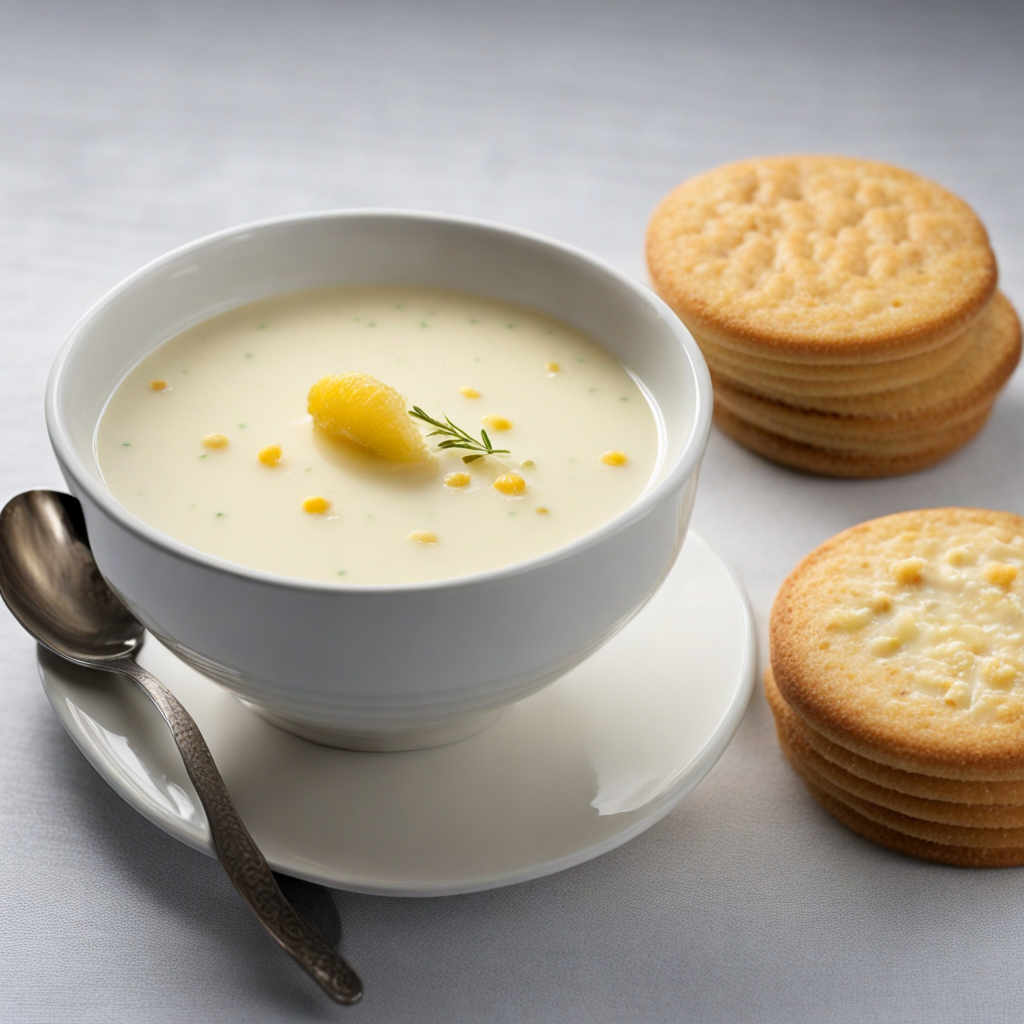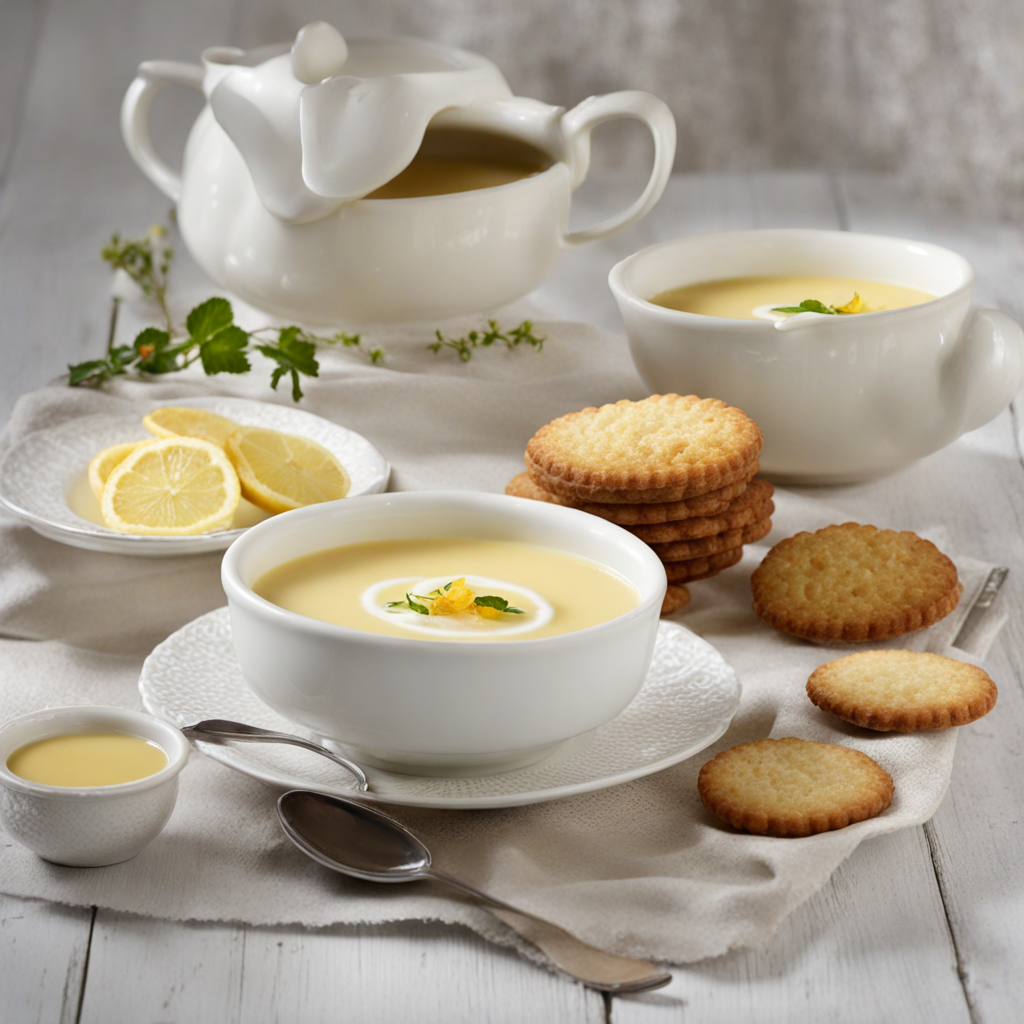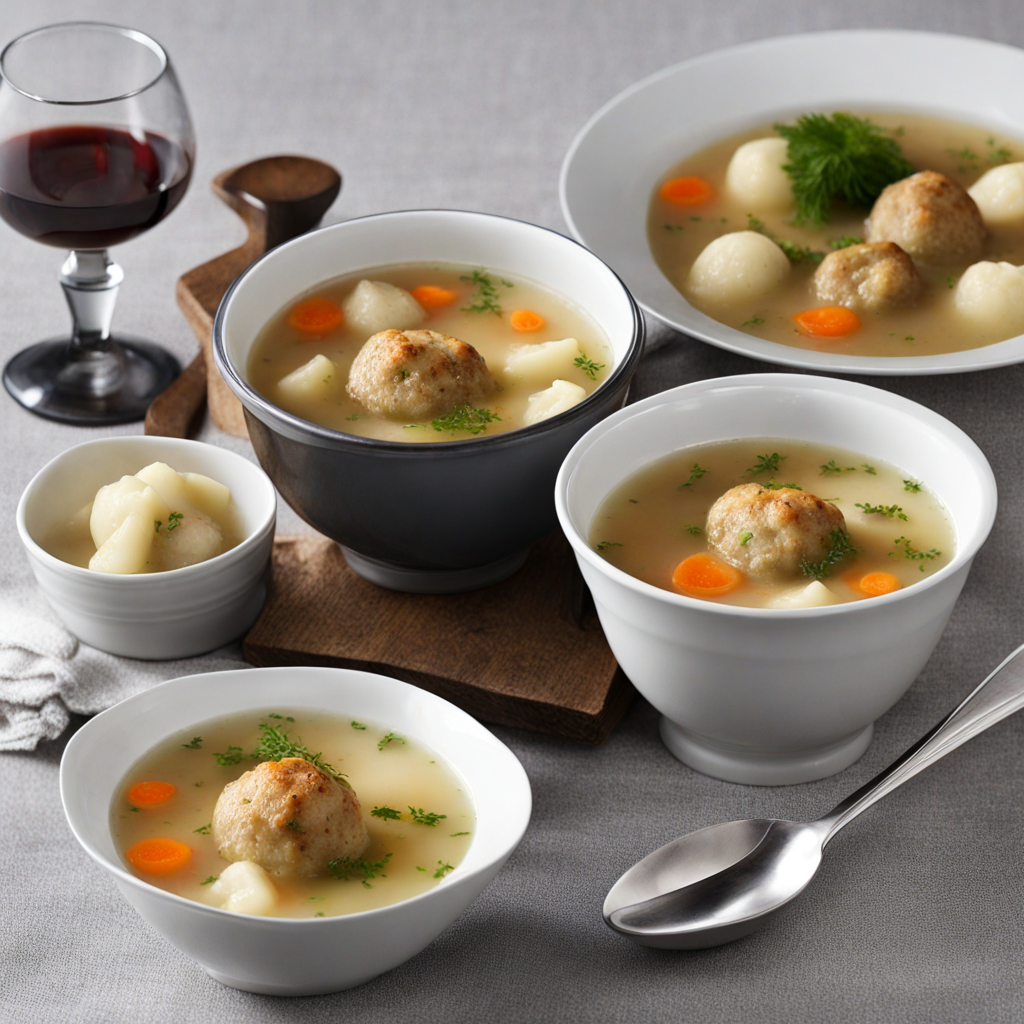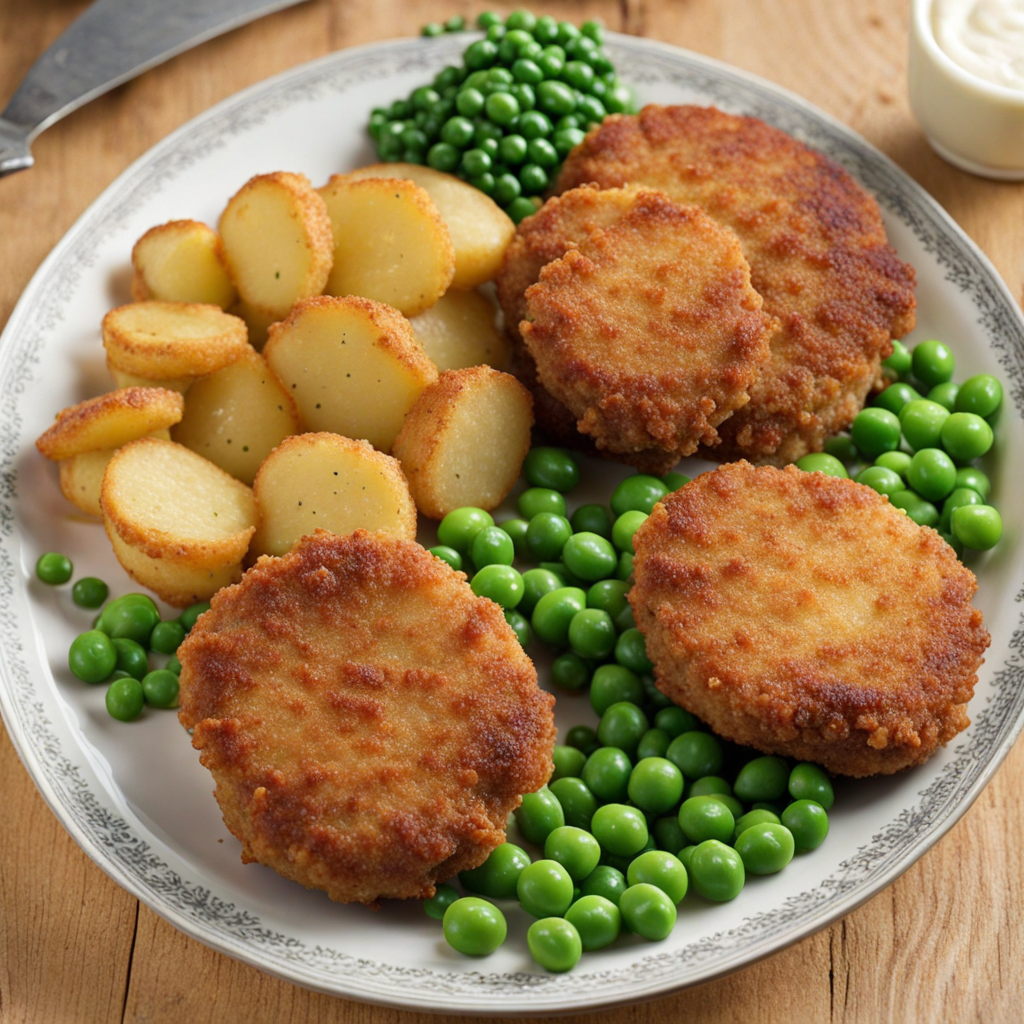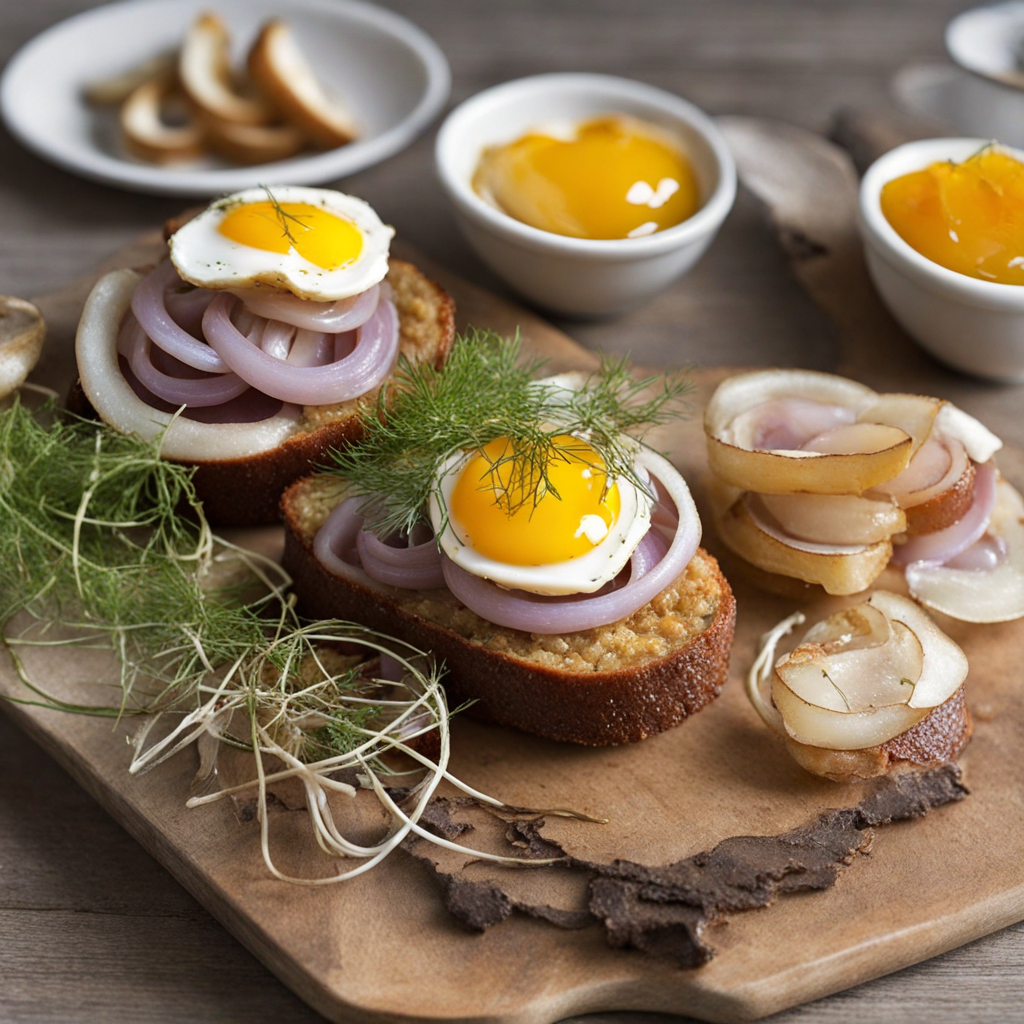Koldskål
Koldskål is a delightful Danish dish that embodies the essence of summer with its refreshing, creamy texture and tangy flavor. This traditional cold buttermilk soup is typically made from a blend of buttermilk, cream, sugar, and egg yolks, creating a smooth and velvety base. The addition of vanilla and lemon zest enhances its sweetness and provides a zesty kick, making it an invigorating treat on warm days. Often enjoyed as a dessert or a light meal, Koldskål perfectly balances richness with a refreshing quality that captivates the palate. Koldskål is often served chilled, sometimes accompanied by a sprinkle of crunchy, homemade crumbled biscuits or a side of fresh berries, which add texture and a burst of natural sweetness. Danish families have cherished this dish for generations, often enjoying it during summer gatherings or on festive occasions. The simplicity of its ingredients allows for creative variations, with some recipes incorporating yogurt for added tang or even herbs for a unique twist. This dish not only offers a delightful taste experience but also reflects the Danish approach to food, emphasizing freshness and seasonal ingredients. Each spoonful of Koldskål provides a moment of nostalgia, evoking memories of sun-soaked picnics and leisurely afternoons. For those eager to explore new culinary horizons, Koldskål is an inviting option that promises to transport your taste buds to the heart of Denmark's summer traditions.
How It Became This Dish
Koldskål: A Chilled Danish Delight Koldskål, a quintessential Danish dish, is not just a simple cold buttermilk soup; it is a refreshing cultural icon that has evolved through centuries. Its origins trace back to rural Denmark, where the innovative use of local dairy products became a culinary staple. This cold dish, traditionally enjoyed during the summer months, embodies the spirit of Danish cuisine—simple, wholesome, and deeply connected to the land and its seasonal cycles. #### Origins The etymology of "koldskål" translates to "cold bowl," which aptly describes its main characteristics. The dish likely rose to prominence during the 19th century, coinciding with the agricultural advancements in Denmark. As dairy farming flourished, buttermilk became more widely available. Koldskål was originally a practical dish, a way to utilize surplus buttermilk that resulted from butter-making processes. Historical records suggest that the dish may have roots in ancient Scandinavian culinary practices, but it was in the 19th century that koldskål truly began to take shape as a unique Danish creation. Recipes from this period often included fresh buttermilk, sugar, and a hint of vanilla, with some variations incorporating lemon or egg yolk for added richness. #### Cultural Significance Koldskål is more than just a dish; it is a symbol of summer in Denmark. Traditionally served during the warm months, it is a beloved treat that evokes feelings of nostalgia and community. Families gather to enjoy it, often served with crispy, sweet "kammerjunkere," small biscuit-like treats that add texture and a delightful crunch. This combination creates a harmonious blend of flavors and textures that epitomizes Danish summer cuisine. In Denmark, summer is not merely a season; it is a time for celebration, outdoor gatherings, and enjoying the bounties of nature. Koldskål fits seamlessly into this lifestyle, providing a light, nutritious option that refreshes the palate on hot days. It is often enjoyed as a dessert or a light meal, making it versatile and accessible. The dish also carries with it a sense of tradition and heritage. As with many foods, koldskål recipes have been passed down through generations, each family adding their unique twist. This aspect of koldskål reflects the broader Danish cultural ethos, where family, tradition, and community are deeply valued. #### Development Over Time Over the decades, koldskål has undergone various transformations, adapting to changing tastes and lifestyles while remaining a beloved staple. In the early 20th century, industrialization and urbanization began to influence food habits in Denmark. As people moved to cities, traditional farming practices dwindled, and the availability of fresh, local ingredients diminished. However, koldskål managed to maintain its place in the culinary landscape, thanks in part to the convenience of packaged buttermilk. The post-World War II era saw a resurgence of interest in traditional Danish foods, with koldskål at the forefront. The 1950s and 1960s marked a time of national pride, and many Danes sought to reconnect with their culinary roots. Koldskål became emblematic of this movement, often featured in cookbooks and magazines, celebrated for its simplicity and wholesome ingredients. In the late 20th century and into the 21st century, koldskål experienced another renaissance. With the rise of the slow food movement and a growing emphasis on organic and locally sourced ingredients, Danish chefs began to reinvent koldskål. Innovative variations emerged, incorporating seasonal fruits like strawberries, rhubarb, or even herbs like mint and basil, reflecting a modern twist on the classic. This evolution not only highlights the dish’s adaptability but also its continued relevance in contemporary cuisine. The globalization of food culture has also played a role in koldskål's development. As Danish cuisine gained international attention, koldskål found its way onto menus beyond Denmark’s borders. Chefs around the world have embraced the dish, offering their interpretations and presenting it in new culinary contexts. This international interest has further solidified koldskål's place as a symbol of Danish culinary heritage, while also allowing for creative expressions that resonate with global palates. #### Koldskål Today Today, koldskål remains a cherished dish in Denmark, particularly in the summer months when it is enjoyed at picnics, barbecues, and family gatherings. The traditional recipe continues to be popular, but new variations abound, reflecting the changing tastes and preferences of modern diners. Some may opt for a vegan version, substituting dairy with plant-based alternatives, while others experiment with flavors and textures, incorporating superfoods or exotic spices. In Denmark, koldskål is commonly found in supermarkets, packaged for convenience, making it accessible to those who may not have the time or resources to prepare it from scratch. However, for many Danes, the homemade version remains the gold standard, a labor of love that connects them with their roots and family traditions. Koldskål is not merely a dish; it is a bridge across time, linking generations through shared culinary experiences. It represents the resilience and adaptability of Danish cuisine, embodying the principles of simplicity, quality, and seasonal enjoyment. As it continues to evolve, koldskål exemplifies the enduring connection between food and culture, reminding us that some dishes, no matter how they change, can remain timeless treasures of a nation. Conclusion In summary, koldskål is a delightful and culturally significant dish that has stood the test of time in Denmark. From its humble origins as a way to utilize buttermilk to a symbol of summer and community, koldskål embodies the spirit of Danish culinary tradition. Its evolution over the years reflects broader changes in society while remaining true to its roots. Whether enjoyed in its classic form or as a modern twist, koldskål continues to be a beloved part of Danish identity, cherished by all who partake in its refreshing embrace.
You may like
Discover local flavors from Denmark


